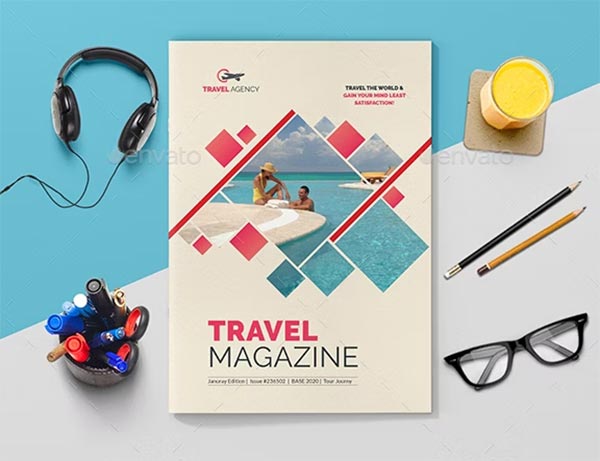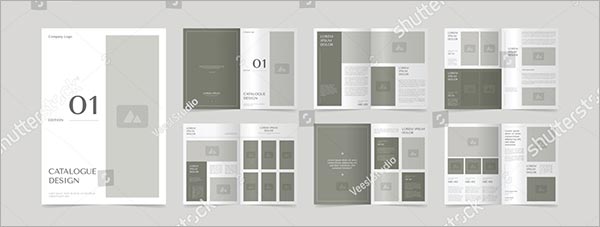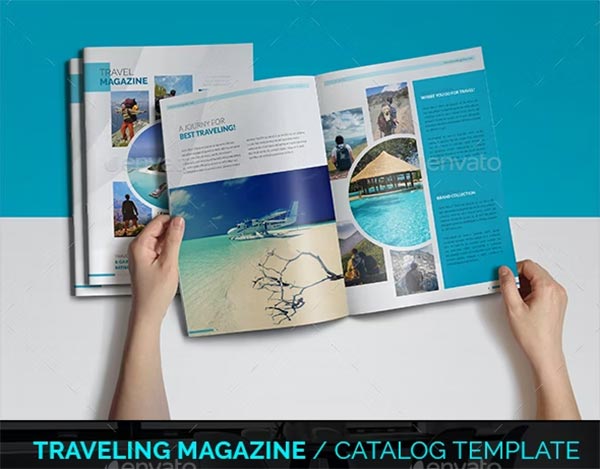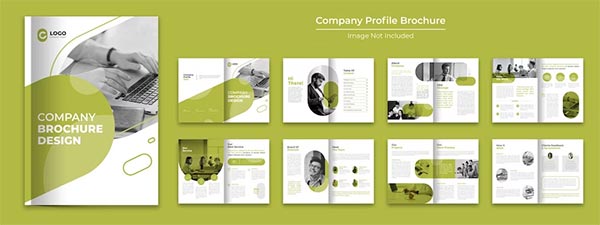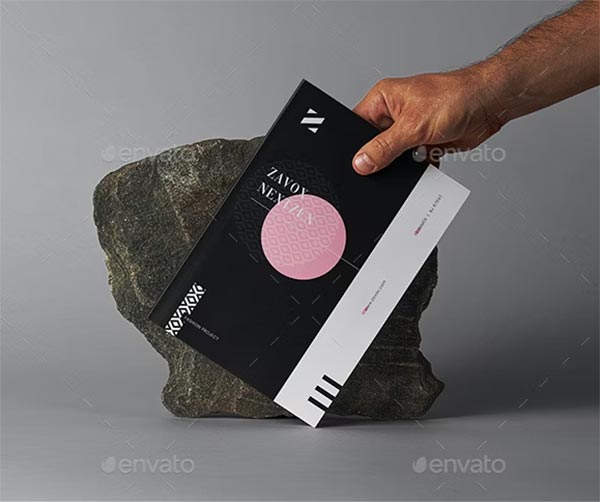Magazine Catalog Templates: Elevating Your Brand’s Visual Storytelling
In the fast-paced digital age, magazine catalog templates have become an essential asset for brands, designers, and marketers. A well-crafted catalog can be a powerful medium, enabling businesses to showcase their products, services, or ideas in a visually stunning format. Whether you're working in affiliate marketing, selling graphic design templates, or designing for a specific client, magazine catalog templates offer versatility, creativity, and structure. They not only help streamline the design process but also enhance your brand's storytelling capabilities.
In this article, we explore how magazine catalog templates can elevate your brand, increase engagement, and drive results.
Why Magazine Catalog Templates Are Essential
Catalogs are more than just a collection of products; they are an expression of your brand’s identity, values, and creativity. A professionally designed magazine-style catalog can captivate readers, hold their attention, and guide them through your brand’s narrative. Whether you are showcasing fashion collections, furniture designs, or digital products, these templates provide the perfect canvas for creativity.
1. Visual Consistency and Branding: One of the most significant advantages of using magazine catalog templates is their ability to maintain visual consistency throughout the publication. A template allows you to lock in your brand's colors, fonts, and layout, ensuring that every page reflects a cohesive and professional look. For affiliate marketers and graphic designers, this consistency is key to building a recognizable brand presence.
By using a pre-designed template, you can ensure that your branding remains uniform across multiple catalogs or magazines, while still allowing for creative tweaks that make each publication unique.
2. Time Efficiency and Customization: Creating a magazine catalog from scratch can be a daunting and time-consuming task. Magazine catalog templates, however, streamline the process by providing pre-structured layouts that are ready for customization. This is particularly beneficial for affiliate marketers and e-commerce businesses who need to produce high-quality catalogs on a regular basis to promote new products or services.
By starting with a well-designed template, you can simply plug in your content—whether it’s product descriptions, images, or affiliate links—and make any necessary adjustments to suit your brand’s style. Templates often come with drag-and-drop features that make it easy to modify layouts, add images, or adjust text, helping you create a polished final product in a fraction of the time.
3. Multi-Industry Versatility: Magazine catalog templates aren’t limited to any one industry. From fashion and lifestyle brands to tech startups, these templates provide a flexible foundation for designing catalogs that cater to different markets. Whether you're curating a catalog of luxury watches, home decor, or digital products, magazine templates can be tailored to fit the unique aesthetic and content needs of your niche.
For graphic design template sellers, these templates provide an excellent opportunity to create and sell customizable magazine catalog layouts to a wide range of clients. The more adaptable your template, the broader the audience it can serve—making it a valuable asset in your design toolkit. Product Catalog Templates
Using Magazine Catalog Templates in Affiliate Marketing
Affiliate marketing is an industry driven by strategic content creation and compelling visuals. As an affiliate marketer, your success depends heavily on how you present products and services to your audience. Magazine catalog templates offer a sophisticated and visually appealing way to promote affiliate products while providing readers with valuable, in-depth information.
1. Product Showcases with Engaging Visuals: When it comes to promoting products through affiliate marketing, the way you present them can significantly impact your conversion rates. Magazine catalog templates offer the perfect format to create engaging product showcases. With ample space for product images, descriptions, and reviews, these templates allow you to tell a visual story that encourages readers to click and buy.
The template layout also allows you to insert affiliate links seamlessly, blending promotional content with organic design in a way that doesn’t feel intrusive. Instead of simply listing products, you can create a lifestyle narrative around them, showing how these items fit into a broader context that resonates with your audience.
2. Content-Rich Catalogs for Value-Driven Campaigns: Affiliate marketing isn’t just about driving sales—it’s about providing value to your audience. With a magazine catalog template, you can combine in-depth content with product promotions. For instance, if you’re working in the fitness niche, you can create a catalog that features not only fitness gear but also includes workout guides, nutrition tips, and expert interviews.
By offering a catalog that goes beyond mere product listings, you give your readers something valuable, which can help build trust and strengthen your relationship with your audience. This approach can lead to higher engagement rates and better affiliate marketing outcomes.
3. Seasonal and Niche-Specific Catalogs: Magazine catalog templates are also perfect for creating seasonal or niche-specific content. Whether you’re running a holiday promotion or curating a catalog for a specific audience—such as tech enthusiasts or fashion-forward consumers—these templates allow you to easily adapt the design and content for each new campaign.
For affiliate marketers, this means you can create tailored catalogs that speak directly to the interests of your target audience, driving more relevant traffic to your affiliate links and increasing your conversion rates.
Designing Graphic Design Templates with Magazine Catalogs
As a graphic designer, magazine catalog templates can open up new avenues for both personal projects and commercial sales. If you sell graphic design templates online, offering a collection of magazine catalog layouts can appeal to a wide audience of entrepreneurs, marketers, and small businesses.
1. Customization for Client Projects: Magazine catalog templates are highly customizable, which makes them ideal for client work. For example, a retail brand might want a catalog that reflects their seasonal product offerings, while a non-profit organization might need a catalog to showcase their recent events and achievements. With a versatile template, you can quickly adapt the layout to fit the specific needs of your clients, delivering a polished and professional product.
The ability to offer customized templates can also increase your revenue as a designer. By adding personalized touches, such as brand-specific color schemes or custom fonts, you can upsell your design services and offer premium packages to clients who are looking for unique, high-end designs.
2. Monetizing Templates in Online Marketplaces: For designers who sell digital products, magazine catalog templates are a lucrative opportunity. The demand for easy-to-use design tools continues to grow, and offering customizable catalog templates on platforms like Etsy or Creative Market can provide a steady stream of income.
When creating templates for resale, focus on crafting highly adaptable layouts that can be used across multiple industries. This increases the value of your product, as buyers from different niches will see the potential to modify the template for their specific needs. Adding features such as drag-and-drop image placeholders, editable text fields, and pre-designed color schemes will also enhance the user experience, making your templates more appealing to a broader audience. Furniture Catalog Templates
Conclusion
In today’s visually driven world, magazine catalog templates are an indispensable tool for marketers, designers, and entrepreneurs alike. Whether you’re using them for affiliate marketing campaigns, designing graphic templates for clients, or promoting your brand’s products, these templates offer a blend of structure and creative freedom. Their versatility, time-saving benefits, and potential for customization make them an essential asset in any designer’s toolkit.
